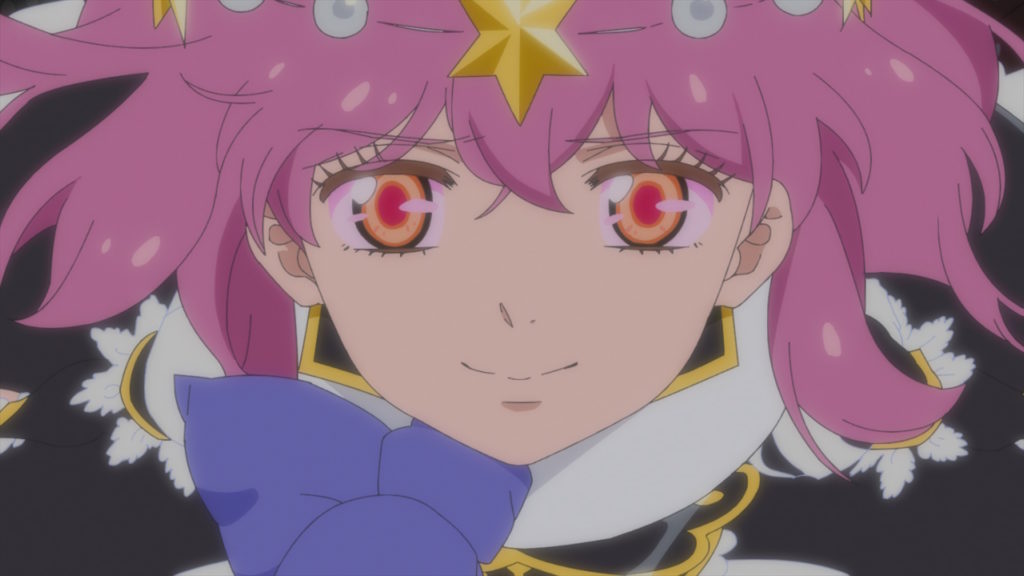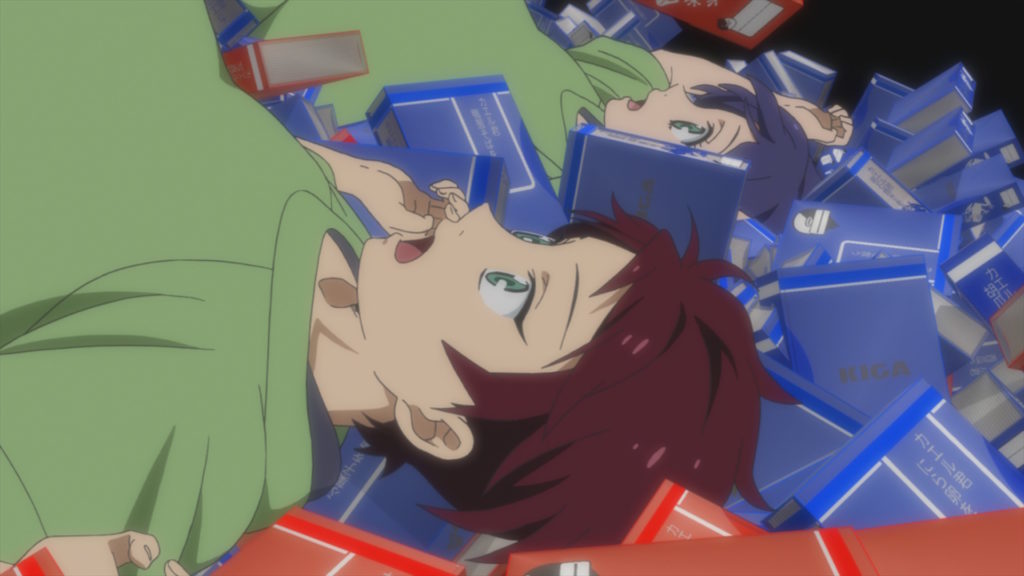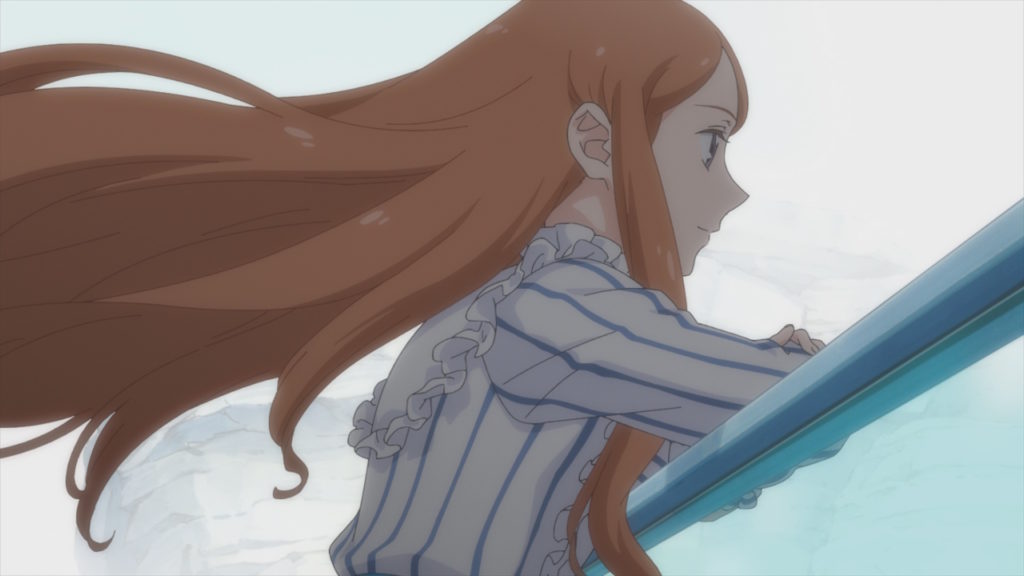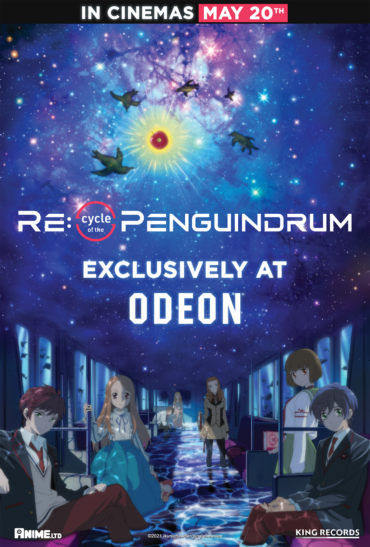Re:cycle of the Penguindrum Parts 1 and 2 Review
Kunihiko Ikuhara has been beloved and admired for many decades now, with his unique style and multi-layered stories, drenched in surreal symbolism, and themes that connect deeply with audiences. His career has been a weird one to follow too; he earned his place in the hearts of many Magical Girl fans, due to working on Sailor Moon and creating the beloved Revolutionary Girl Utena series, but then he went on hiatus for ten years. When he came back in 2011, it was with a surreal series called Penguindrum; it had much hype back in the day as no one knew at the time if he would even make any more afterwards due to his long silence beforehand and aloof nature. Luckily, with the hindsight of 2023, we know that he did make more series after Penguindrum: 2015’s Yurikuma Arashi and 2019’s Sarazanmai. But in 2021, Kunihiko announced a crowdfunding campaign, to help raise funds for a film project to re-edit the original 24 episodes of Penguindrum, including new sequences, to mark its 10th anniversary. The 10-million-yen goal was reached, and the 2-part movie project was released in Japan in April and July of 2022. Now Anime Limited has brought both films over to the UK, for a special movie event exclusive to Odeon cinemas. So how has the strange story of Penguindrum aged over the decade, and can the movie format serve it well? Let’s find out.

Siblings Kanba, Shoma and Himari are at the aquarium one day when Himari collapses and eventually dies. She has been sick for a while, but her brothers are still in shock when the penguin hat Himari purchased at the aquarium suddenly brings her back to life. But in exchange for extending her life, the mysterious spirit within the hat demands that Shoma and Kanba find the ‘penguindrum’. Their first clue is to find a girl named Ringo, who has a mysterious diary that can somehow tell the future. But it’s in all of their pasts that a connection was made and shaped their destiny, and is now about to come crashing down upon them all.
I first reviewed Penguindrum back in 2013 when it was first released by Manga UK but it has since gone out of print. I will admit, I’m not proud of my original reviews. Outside of the random Utena movie release from MVM a few years earlier, I had never experienced Kunihiko Ikuhara’s work so the over-the-top visuals, choppy storytelling, and layered themes buried underneath it all, was mostly lost on me at the time. I’d never gone back to re-watch it, so I was pleased to be given an opportunity to re-experience it again in movie form. Mostly due to that in 2020, I did a deep dive into Revolutionary Girl Utena when it was released in the UK on Blu-ray and feel like I’ve grown a third eye just for Kunihiko Ikuhara’s work as a result, as well as an appreciation for his particular style. Whilst a compilation movie is never going to be a substitute for the experience of the original length TV series, I can say that re-experiencing the story in movie format, many years after my initial watch, gave me a new appreciation for it. I get now what Kunihiko Ikuhara was going for, and really enjoyed the 4+ hours’ ride the movies provided.
Let’s first tackle what made the chopping block from TV to movie, and what’s been added to warrant the movie remake. The 2-part movie covers all 24 episodes of the series and does a really good job of telling the whole wacky story from beginning to end, but some cuts had to be made. One cut I do appreciate is the unfortune rape scene from the original series; it’s a rather infamous section in the anime because it comes out of nowhere and is never addressed afterwards or given the weight the act should have had, so ditching it for the film was a smart idea. Sadly, the biggest cuts are made to the backstories; although there is a LOT kept in this movie (with the amount of ‘flashback’ graphics you see across the movies, you’ll be surprised that there are still lots on the cutting room floor) including the key ones like Ringo’s parents and Himari’s first meeting with Shoma. However, a few of the emotional punches, and the twist of the complex relationship dynamics across the main three protagonists doesn’t land as hard here as in the TV series. My personal favourite episode of the series, Episode 9, which reveals Himari’s relationship to the Double H idols, struck very well in the original anime, but here it’s trimmed down so much that I questioned why I liked it so much in the first place. Then there’s Masako, whose backstory is completely stripped away, and her secret relationship to Kanba is relegated to dialogue only, which obviously doesn’t land well due to her (and, by extension, Kanba’s) backstory not being used in the movie.
In terms of new content, there’s not that much; the movie has been ‘reframed’ to be like a flashback to what happened earlier, and most of the new footage is tied into a new version of the spirit within the hat. A lot of the new clips also make use of real-life footage, which gave me an End of Evangelion vibe, but I will say that going from the reused footage to the new clips is like jumping from HD to 4K. This isn’t dismissing the original animation from the TV series; it’s still animated incredibly well and holds up by today’s standards, but you can tell that the movie-exclusive clips are rendered in a wholly different way, and the sharpness in quality jumps in between.

But what about the story itself, how intact is it from TV to movie format? Well due to the erratic nature of said story, it should be said that neither film follows a ‘movie’ structured 3-act plot. However, Kunihiko Ikuhara did do a good job of moving certain flashbacks around to make them land more naturally in the narrative of the new movie pacing, rather than just placing them where they were in the TV series, and if all you want is just to re-experience Penguindrum, then that’s what you’ll get. The new framing device adds a slightly happier ending note to the finale, but the story is complete, and it’s still a unique tale of overcoming and living with trauma and abuse, especially the abuse burden by parents onto children, and how it affects them, even into adulthood. The story at the start talks a lot about ‘fate’ and ‘destiny’, but it’s not the magical kind that grants a hero powers to save the world, it’s the kind that gives a child a horrific weight to carry before they can learn how to carry themselves. The ‘fate’ they’re referring to, is being forever branded by the actions of their parents and how, by extension, society expects them to ‘never achieve anything’ as the spirit of the hat tells them. The movie looks at what happens when the actions of parents affect their children; whether it’s an adult’s actions that can shame an entire family (like committing a crime) and therefore forever label their kids as monsters just by association, or something more direct like physically abusing their kids; it creates a permanent scar on the kids. They are born with a weight they did not choose to carry, and often as a result feel lost, alone, and unloved. They must somehow navigate said trauma that they did not want or earn, and still maintain a semblance of life despite little to no help from society, and when it’s left undealt with and if they somehow survive, they grow into broken adults who continue the cycle of abuse, because trauma has no expiry date. The movie uses a real-life event from Japan (that I won’t spoil as it’s revealed at the end of Part 1) to show how such actions of adults can have systemic effects across not just multiple lives, but also generations.
But what has that got to do with the cute penguins that follow our heroes around the place? Well, aside from obvious comedy to try and offset the darker themes, they also represent said trauma. Trauma isn’t something that you can just throw away, it’s with you all the time and sometimes can feel like it seeps into everything you see and do (the movie has many scenes where penguins are in logos of corporations, stickers on books, labels on packages, etc). But when dealt with healthily, although it’s still there, trauma does not have to weigh you down. There’s plenty of scenes, where the characters and, by association, the penguins, are eating food, knitting, playing, etc. Trauma will always be a part of them, but it’s not the ONLY part of them. That’s what I got out of it anyways; Kunihiko Ikuhara isn’t one for revealing what all the symbolism means!
In terms of subtitles, there are a few weird edits made across both movies; for example: the second film has the songs translated but Part 1 does not. Also, if more than one character is talking across multiple screens/sentences, then the lines jump around from frame to frame, and keep chopping and changing which character is saying what. It got a bit confusing sometimes!
Re:cycle of the Penguindrum is a wild ride, just like the original TV series, that doesn’t add much to the already dense story, but is still a joy to experience either way. If you haven’t seen the series, the movie may feel overwhelming as it’s packing a full story into such a short timeframe, but if it’s the only way to experience said story, then it’s one hell of a movie experience that you’ll be thinking about long after you’ve left the cinema. It’d be nice if Kunihiko Ikuhara could do more films in the future; they’re certainly fun to talk and write about!
Re:cycle of the Penguindrum is in cinemas May 20th, purchase your tickets here.

©2021 ikunichawder/pinglobeunion


